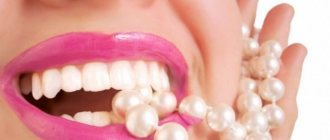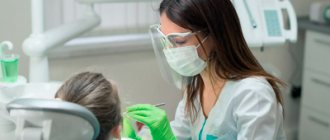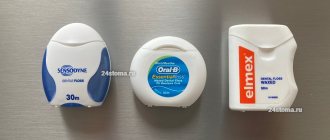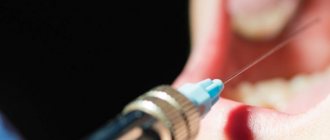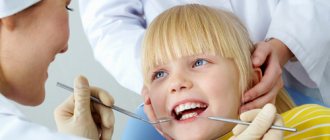Seriously ill patients are usually called those patients who have been diagnosed with significant dysfunctions of organs and systems of the body, which entail partial or complete immobility. Patronage care for a seriously ill person is a real science, which is far from being limited to a simple set of actions “feed, dress, wash.”
Often, the illness of a loved one takes us by surprise, radically changing our entire lives. It is very difficult to prepare in advance for a difficult test. Therefore, when finding themselves face to face with a seriously ill relative, many do not know what to do and panic. At the same time, unqualified care for a bedridden patient can provoke a deterioration in general health and cause a relapse of the disease.
At home, you can care for a seriously ill person on your own or with the help of a specially trained nurse. From a medical point of view, caring for a seriously ill patient who leads an exclusively bedridden lifestyle is divided into a set of general and special measures.
Standard care measures that a nurse or caring relative should perform include:
- assistance in performing daily hygiene procedures and natural functions;
- preparing food for the patient according to the doctor’s recommendations;
- assistance with eating;
- organizing and maintaining a daily routine;
- performing procedures to prevent bedsores;
- treatment of bedsores if they occur;
- monitoring the patient’s condition, timely informing the attending doctor in case of deterioration of health;
- cleaning the room, changing bed linen.
Special care is a set of therapeutic measures selected for the patient depending on the established medical conclusion. Care for such patients must be competent and professional. Especially if we are talking about an elderly seriously ill person. This happens because most often the disease is accompanied by age-related geriatric complications.
Special care measures include the following:
- strict control of the intake of therapeutic drugs;
- massage, physiotherapy;
- assistance in performing therapeutic exercises;
- carrying out measures for the normal functioning of the gastrointestinal tract;
- compliance with diet therapy and drinking regime;
- carrying out psychotherapeutic measures to maintain the patient’s emotional background.
It is worth understanding that neither special nor general care can replace therapy. However, without professional implementation of a set of appropriate measures, the patient’s recovery may be delayed.
Professional care
At an appointment with a specialist, teeth are cleaned with ultrasound.
A special device will remove plaque from the enamel and formed stones at the base of the teeth and under the gums. This procedure is virtually painless. You can't do this yourself. Stones and plaque appear after drinking tea, coffee, and cigarettes. The doctor will check the oral cavity for diseases (periodontal disease) and damage to the enamel (caries). If necessary, he will select the correct treatment and recommend proper dental care.
To strengthen tooth enamel, a specialist can perform fluoridation. It can be ordinary and deep, when special preparations are placed at the base of the tooth, which quickly restores the enamel.
Teeth whitening is carried out using the Air Flow system. It allows you to restore the natural color of your teeth and destroys bacteria. A special sandblasting machine is used, inside of which there is a special solution and an abrasive mixture. With its help, plaque is removed and tooth enamel is polished.
List of necessary daily caring actions
The choice of complex and frequency of hygiene procedures depends on the condition of the seriously ill patient. It is very important to understand what actions the patient is able to perform independently, so as not to lose the skills that are still available. Every morning, the caregiver should:
- wake up the patient;
- help relieve natural need;
- wash the genitals, change the diaper if necessary;
- carry out hygiene procedures - toilet the eyes, nose, mouth, ears;
- wipe the armpits, areas under the breasts in women;
- comb hair;
- straighten the bed, pajamas;
- prevent bedsores;
- measure physiological indicators;
- feed the patient;
- help take medications;
- follow the doctor’s individual recommendations.
Careful hygienic care ensures the comfort and well-being of a bedridden patient.
In contact with
Personal hygiene
Represents daily oral care using special products:
- special brush;
- toothpaste or powder;
- floss;
- conditioner balms.
The main method of hygiene is the daily removal of food debris that harms the enamel and tooth tissue. The mucous membrane is well supplied with blood and serves as a site of colonization and infection by bacteria. If you do not pay enough attention to hygiene, active reproduction of pathogenic flora will begin.
Rules for choosing toothpaste
If the brush cleans all dirt mechanically, then the functions of toothpaste are much broader. Many people prefer universal options, which, according to the manufacturer, do everything at once; clean, whiten, freshen breath, treat and prevent various diseases. As a rule, such pastes are not medicinal and actually partially solve all of the above problems. Universal toothpastes are safe and suitable for people without serious dental problems.
General hygiene rules
There are simple rules for caring for your teeth and oral cavity. They must be taught from early childhood. The best thing is the example of adults. Forming such a habit is a very important step in creating a “Hollywood smile” in the future. To do this you need:
- Brush your teeth thoroughly every morning. The second time must be before bedtime;
- after snacks, clean with a special thread (floss);
- use fluoride-containing pastes;
- visit the dentist 2 times a year.
Proper nutrition is also important to keep your mouth healthy. A lack of fluoride can lead to premature destruction of tooth enamel. Products containing many chemical fillers (chips, crackers, carbonated sweet water) negatively affect the appearance of teeth and lead to darkening.
Don't let your skin dry out!
Enhanced keratization and epithelization of the skin is one of the physiological mechanisms in bedridden patients. You can avoid it by following these steps:
If you cannot take a full bath or shower, you can do the following:
This is a dry bathing option that will replace a full bath. After the procedures, be sure to smear your entire body with lotion, paying special attention to your back and legs. Massage movements will help increase blood flow, and the skin will breathe easier, and hypoxia will disappear.
Cleaning accessories
Everyone should have their own toothbrush. How to choose a toothbrush? What are they? When coming to a store, customers often choose products that they like better in appearance. There are many types of toothbrushes; everyone should choose one for themselves according to the recommendations.
Types of brushes
- Mechanical is the most popular and inexpensive.
- Electric is more expensive. Less effort is needed to cleanse.
In addition, you need to pay attention to the stubble. It comes in different hardnesses. You need to make the right choice:
- very soft, suitable for children and adults with sensitive enamel;
- soft – for adults with bleeding gums;
- medium – the most popular and is suitable for children over 12 years old and adults;
- hard is suitable for those who quickly develop plaque and wear braces.
A regular brush has been selected, but you still need to choose the right toothpaste. Depending on the condition of your oral cavity, your doctor can recommend the choice of toothpaste.
Types of pastes
- whitening;
- to strengthen gums;
- fluorine-containing;
- for sensitive teeth;
- children's.
Before purchasing paste, you need to know exactly what problem needs to be solved. Pay attention to the composition. The best pastes are made on a natural basis. Chemical additives in large quantities can be harmful.
Dental floss or floss is needed to properly care for your teeth. The human tooth has five surfaces; a brush cannot reach all sides. Especially a lot of food settles on the sides. Threads are used for removal. They come in different types and qualities:
- round or flat;
- waxed or not;
- different strength;
- impregnated with various compounds (chlorhexidine, menthol, antiseptics).
When buying such threads, pay attention to their quality.
Many dentists recommend a modern device for cleaning the oral cavity - an irrigator - for home use. Different types of devices are available. It is an addition to a toothbrush and is used after brushing your teeth for a more complete cleansing of the oral cavity.
Prevention of bedsores
One of the best methods of dealing with bedsores on the skin of older people is to prevent them from developing!
- Change your relative’s body position every 2 hours;
- If the elderly person is lying on their side, place a pillow or bolster from the groin area to the feet so that their legs are not touching;
- Try, if possible, not to use rubber diapers and sheets; they do not allow air to pass through and easily form wrinkles;
- Be sure to lay an anti-bedsore mattress. Make sure that the degree of its filling corresponds to the patient’s weight;
- Regularly moisturize the skin of your disabled relative, use special lotions, creams and anti-bedsore products;
- Change an elderly person's diapers and diapers on time, try to avoid prolonged contact of his skin with urine and feces;
- Carry out all hygiene procedures regularly (washing, scrubbing, etc.);
- Do not use care products containing alcohol. They dry out the thin skin of older people and make it susceptible to various injuries and irritations;
- Monitor the condition of your ward’s skin, examine him daily for diaper rash and irritation;
- Trim your older adult's fingernails and toenails regularly. If he does not have diabetes, then they can be slightly filed, giving the toenails a square shape and the fingernails a rounded shape. If an elderly person is diagnosed with diabetes, you cannot file his nails with a file;
If your relative, despite all prevention methods, develops bedsores, do not blame yourself, there is no 100% way to avoid this problem. Contact your doctor without delay; the sooner you start proper treatment, the faster and more effectively you will get rid of this disease.
Step-by-step method of cleaning the oral cavity
How to brush your teeth properly should be taught from childhood. Then this habit will remain for life. We must remember that the tongue and cheeks should be cleaned. Germs also accumulate in these places. Many people brush their teeth incorrectly. How to do it correctly:
- wet the brush and apply the paste;
- We clean the upper ones from the gums to the edge of the tooth. There are 4-5 movements near each. We start from the rear and move to the front;
- We do the same with the inner edge;
- We brush wide teeth from above horizontally;
- We do the same with the bottom row;
- in conclusion we clean our tongue;
- We close the teeth and massage the gums in a circular motion, lightly pressing the brush.
Dentists recommend brushing from the gum to the edge to prevent food from getting stuck between the teeth.
How to brush your teeth correctly
To ensure proper oral hygiene, it is not enough to choose the right toothbrush, toothpaste and other products. Proper cleaning technique must be followed to completely remove plaque and tartar from the enamel surface. The basic rules of this procedure are as follows:
- making rotational movements, trying to remove food debris from the interdental space, move it from the gum to the tooth;
- Using gentle back-and-forth movements, clean the entire tooth: outer, inner and chewing surfaces. The procedure should take about 3 minutes;
- clean the surface of your tongue to freshen your breath and rid your mouth of bacteria as much as possible;
- use dental floss;
- Rinse your mouth with mouthwash for 30 seconds.
Dentists distinguish several methods of brushing teeth. The appropriate one is determined individually; it is better to consult a dentist about this. What all methods have in common is that they are performed for at least three minutes and at the same pace.
On average, instead of the allotted three minutes, people spend 46 seconds brushing their teeth.
Universal cleaning suits everyone. With it, two teeth are cleaned in turn in the direction from the gums to the cutting part of the tooth. The outer side of the teeth is cleaned first, and only then the inner side. If there are no gum diseases, you can complement the procedure with a massage using circular movements of the gums.
During standard brushing, the brush should be held at a 45-degree angle to the gum.
Brushing harshly will help remove plaque effectively, but is not suitable for people with painful gums. The brush is positioned perpendicular to the buccal surface and moves in a circle from the internal surfaces to the chewing surfaces.
Gentle brushing will not harm sensitive gums. Vertical movements from the gums down are made with the teeth closed when cleaning the front surface and with the jaw open when cleaning the inner surface.
The technique of using dental floss also implies several rules. First, the floss should be about 45 cm long. For each brushing, use a new section 3-5 cm long. The interdental spaces should be cleaned with gentle movements, following the contours of the gums. Go to the surface of the teeth below the gum line, but do it carefully, avoiding sudden movements.
Consequences of poor hygiene
Improper oral care can lead to irreversible consequences. If personal hygiene is lacking, this leads to the following consequences:
- bad breath;
- destruction of enamel, the appearance of caries;
- periodontal disease;
- inflammation and bleeding of gums;
- gumboil, loss of teeth;
- poor digestion due to lack of teeth;
- violation of smile aesthetics.
To avoid health problems and to have a dazzling smile, you should learn the rules of personal hygiene from childhood and do not forget to visit the dentist for preventive purposes.
Fighting stagnation in tissues
A caregiver for a bedridden patient needs to know that the basis of life is movement. In boarding houses for bedridden patients, exercise therapy and anti-decubitus massage are carried out daily, preventing the formation of stagnation in the tissues. Regardless of the patient’s condition and well-being, teach him to do basic physical exercises every day. If paralysis occurs, the hospital will definitely send a physical therapy specialist who will show you a special complex. In any case, you need to learn it and repeat it constantly with the patient.
At first, some may resist because it is difficult and difficult. You may need to have a conversation about the benefits of such actions. In any case, every 4 hours the patient should be forced to roll over from one position to another, and taught to do this independently without the help of others. The horizontal position leads to stagnation not only in the tissues of the whole body, including in the bronchopulmonary system. The patient should be taught the basic rules of breathing exercises. This procedure will avoid pneumonia. You can use balloons, inflate and deflate them.
An excellent tool is a cocktail straw, which is lowered into a glass and inhaled air is released through it. Through exercise, the lungs will begin to work more actively.

